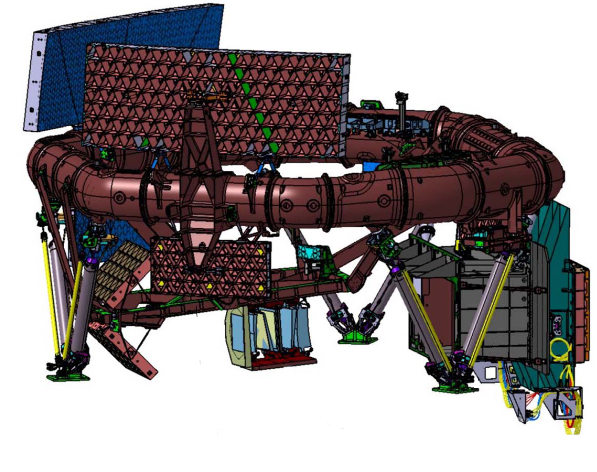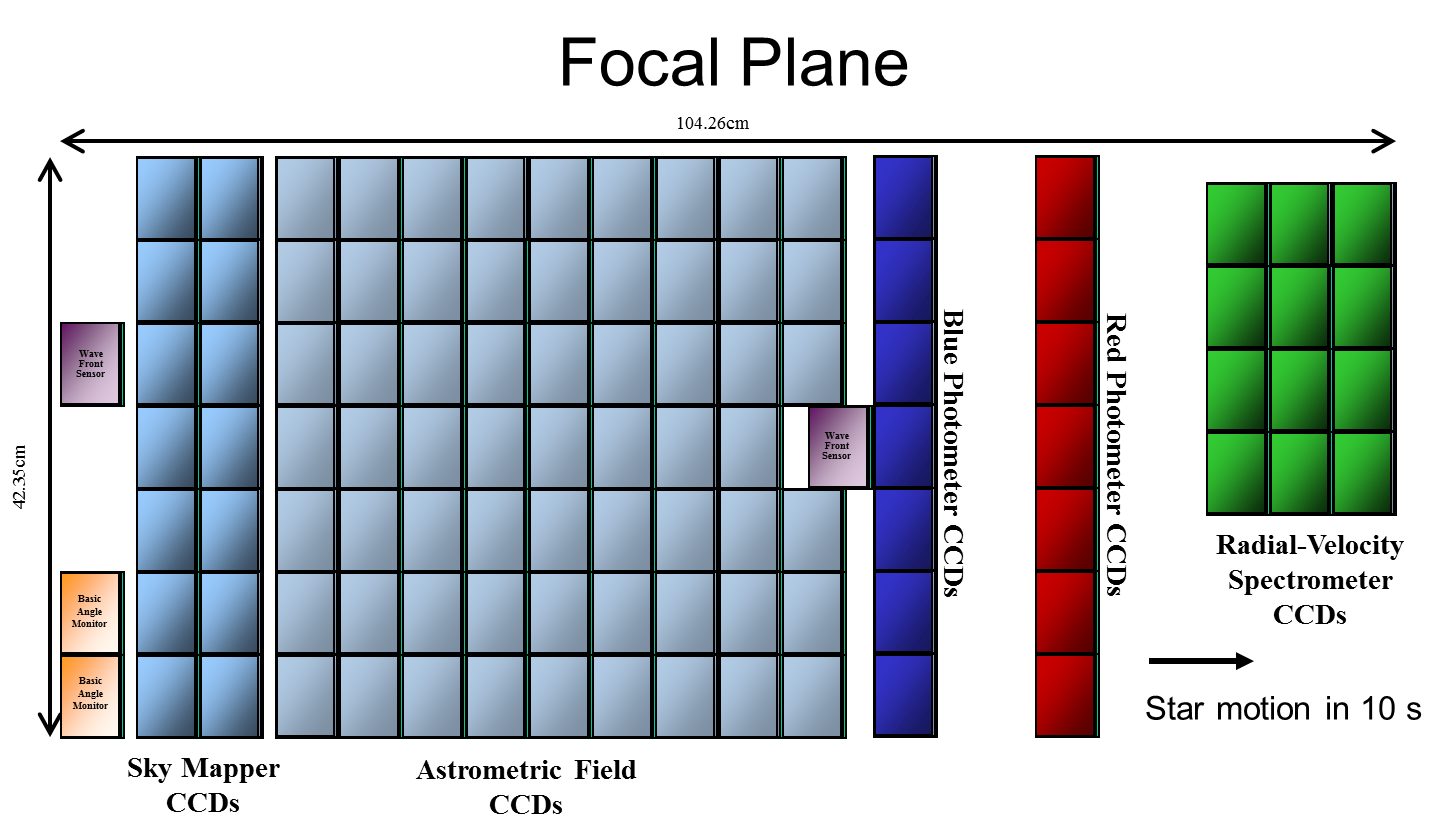Payload Module - Gaia
Payload Module |
| Inside the satellite, Gaia's instruments are mounted on a hexagonal optical bench. The payload features two telescopes sharing a common focal plane, each looking out through an aperture in the payload housing. The two viewing directions are each 1.7° by 0.6° in size, and separated by a highly stable basic angle of 106.5°. |
| Light from a celestial object enters the arrangement through one of the two apertures, striking the large primary mirror opposite (M1 and M1' in the payload illustration). The light is reflected by the primary mirror and bounced by a series of further mirrors along a total focal length of 35 m, with the two light paths meeting at the M4/M4' beam combiner before finally reaching the shared focal plane. At the focal plane is a large mosaic of sophisticated, custom-built charge-coupled devices (CCDs), light detectors of essentially the same kind as found in a digital camera. Containing 106 CCDs, the focal plane assembly comprises a total of nearly one billion pixels (a 'gigapixel'), compared to the few million of a typical digital camera. |
 |
| credit: EADS Astrium |
| As the spacecraft slowly rotates, the light from the celestial object (that is, the image of the object) passes across the focal plane. In this way, Gaia steadily scans the whole sky as the satellite spins and gradually precesses, with each part being observed around 70 times in the course of the operational lifetime. |
 |
- Removed a total of (2) style text-align:center;
- Removed a total of (1) style text-align:right;
- Removed a total of (1) border attribute.
- Removed a total of (1) cellpadding attribute.
- Removed a total of (1) cellspacing attribute.








































 Sign in
Sign in
 Science & Technology
Science & Technology